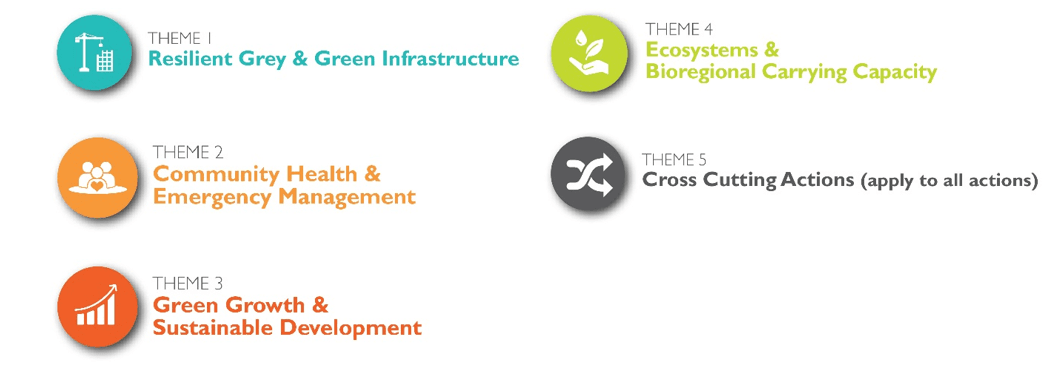- Home
- Services
- Environment
- Climate Change
- Climate Adaptation
Cowichan, we have a plan to adapt.
Our Climate Change Adaptation Strategy and Implementation Framework focus on activities that the CVRD and Partners will undertake to improve our built infrastructure, enhance our health and emergency preparedness systems, enable green economic growth, and preserve local biodiversity. They are the roadmaps to climate action in our region.
Right now, we are focused on implementation--completing actions and projects that make real progress towards our climate adaptation goals.
The Strategy will be updated every decade with the Implementation Plan every four years.
The Strategy
The CVRD Climate Adaptation Strategy focuses on priority impacts across five thematic areas: 
Within these five themes are 20 objectives that outline areas for future action, and lists of actions that can be taken.
Click on each theme below for an example of an objective related to the theme, and an action or activity to support this.
Theme 1: Resilient Grey & Green Infrastructure.
Actions to improve the climate resiliency of the built environment, including its durability, functionality, and sustainability.
An example of what this looks like:
Objective 1: Consider climate change information in land use planning and design, construction, maintenance of infrastructure in the region.
Action 1.1: Continue conducting climate risk assessments as part of asset management planning and ensure rigorous data collection and tracking.
Theme 2: Community Health & Emergency Management
Actions to prepare for and respond quickly to impacts associated with extreme weather and changing climate conditions.
An example of what this looks like:
Objective 5: minimize wildfire risk and associated impacts to the community, environment, and public health and safety, especially for vulnerable populations.
Action 5.3: Establish community clear air shelters to mitigate the impact of wildfire smoke on vulnerable populations.
Theme 3: Green Growth & Sustainable Development
Actions to help our businesses and industry adapt to a changing climate while enabling a thriving economy.
An example of what this looks like:
Objective 11: Improve local water security for agricultural lands, and continue to monitor, assess, and manage water.
Action 11.1: Support and continue promotion of sustainable farming practices and innovate technologies pertaining to water usage.
Theme 4: Ecosystems & Bioregional Carrying Capacity
Actions to preserve and enhance local biodiversity and the resilience of the natural environment and water resources.
An example of what this looks like:
Objective 16: Prepare for shifts in ranges of existing species and influxes of new invasive species.
Action 16.1: Review and update Invasive Species Strategies to include novel species and emerging species affecting the region as a result of climate change.
Theme 5: Cross Cutting Actions
Actions to build capacity, encourage resilience, and integrate climate risk management in virtually all aspects of future work in the region.
An example of what this looks like:
Objective 18: Research, monitor, and disseminate lessons learned on climate change projections, impacts, and adaptive actions.
Action 18.2: Communicate long-term climate change projections and related research to community stakeholders, partners, and the public.
|